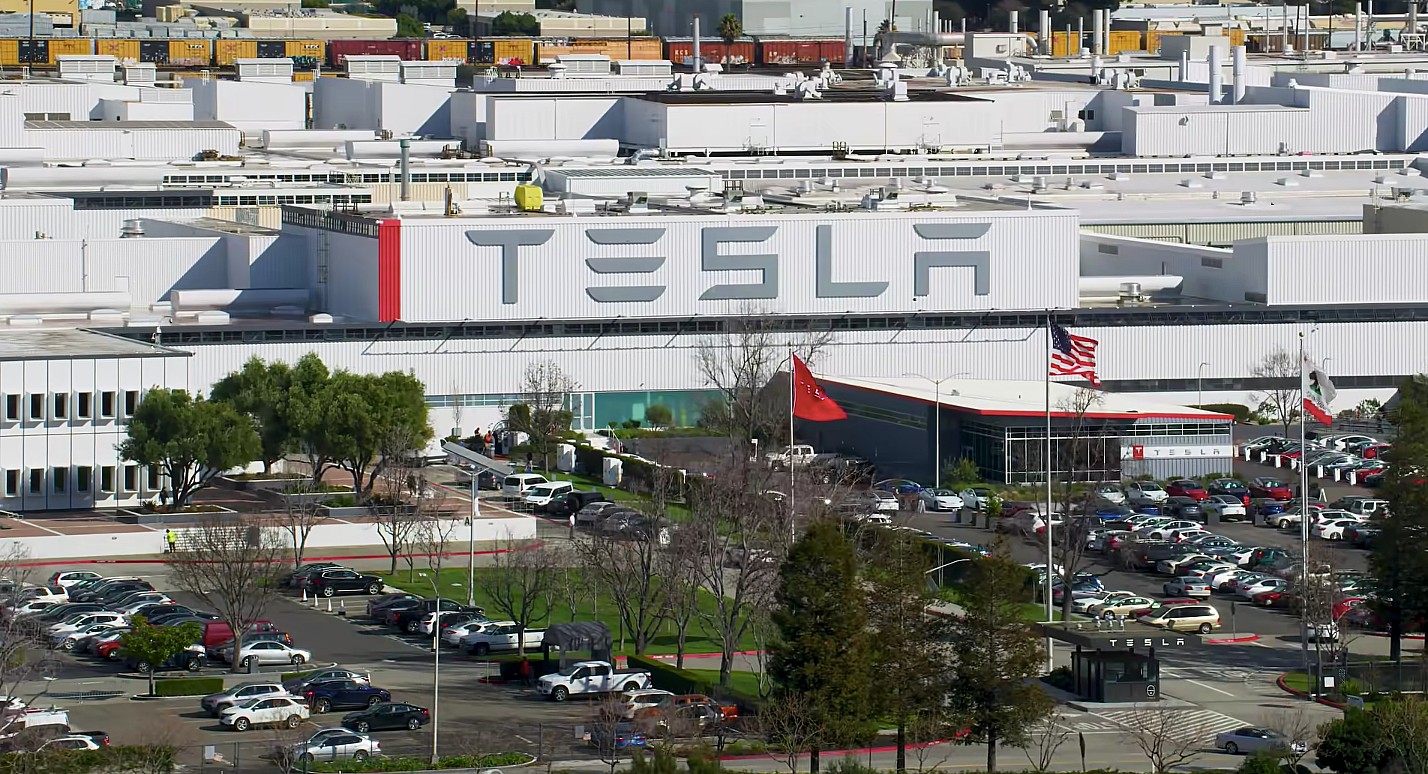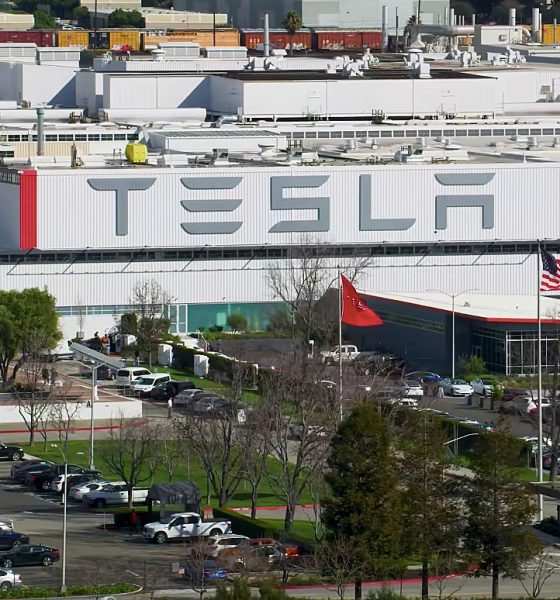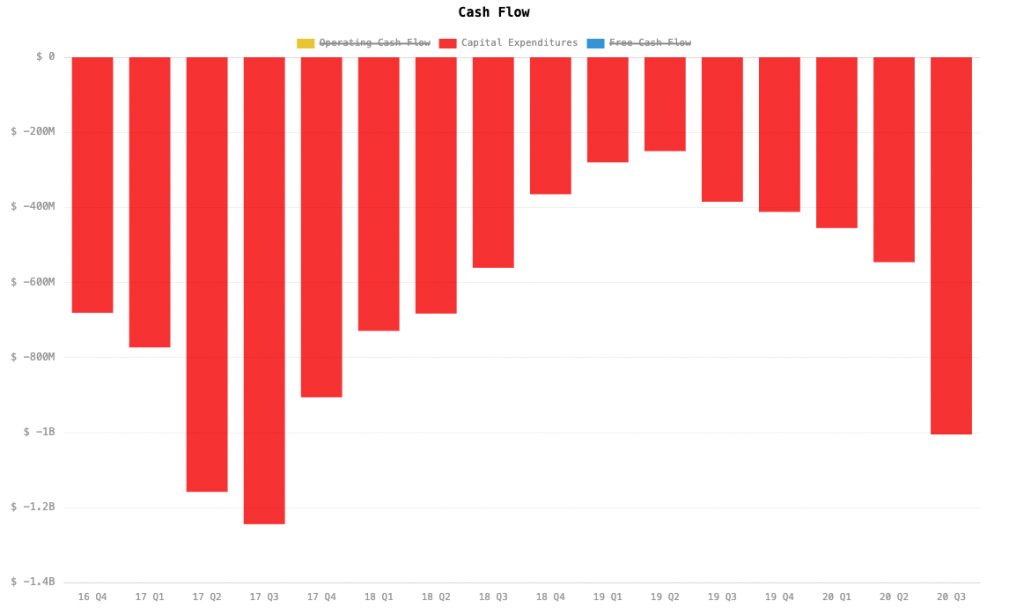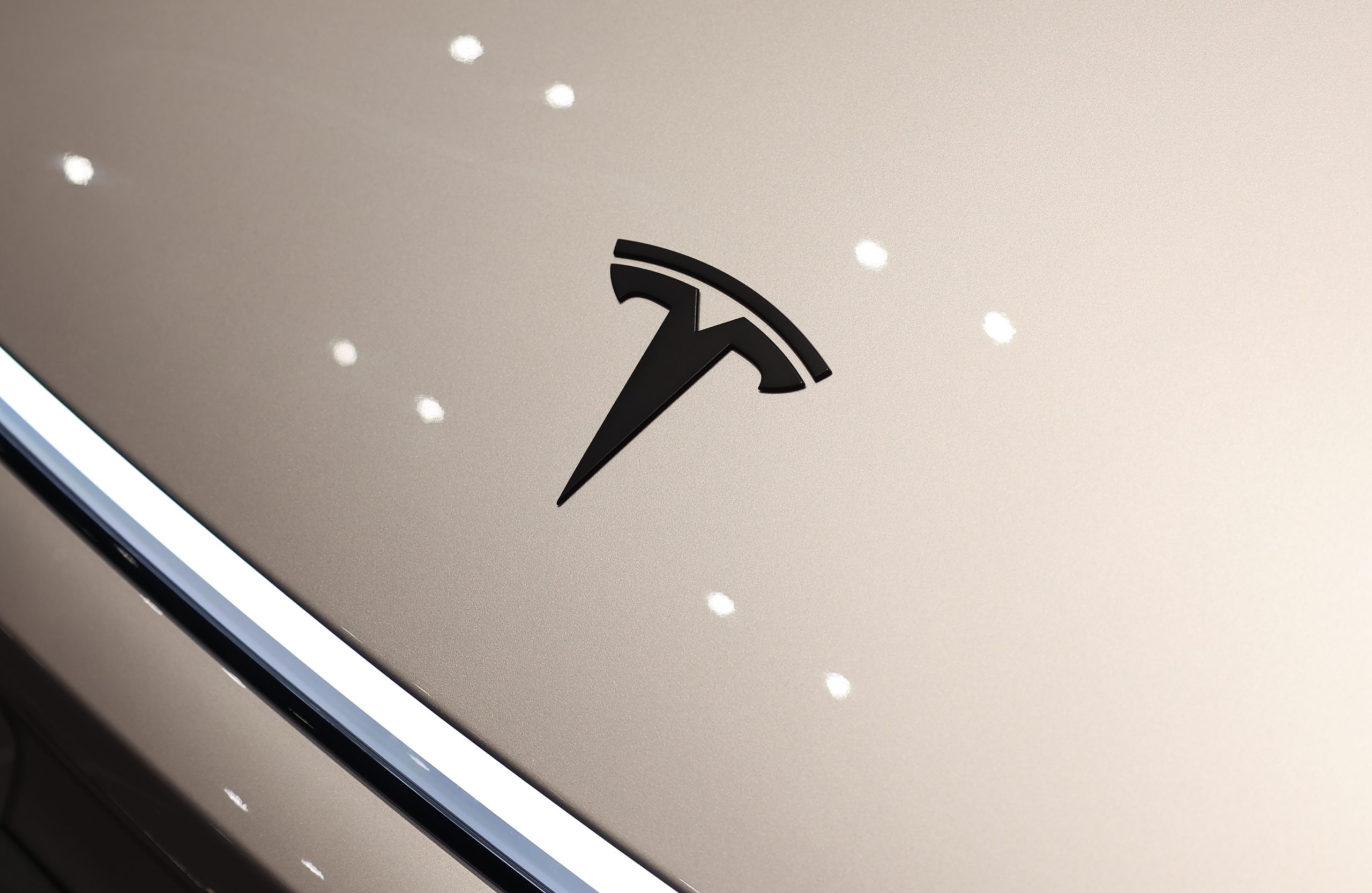

Investor's Corner
Tesla’s CAPEX efficiencies could pave the way for a fleet of ‘Alien Dreadnought’ factories
Tesla’s (NASDAQ:TSLA) Q3 10-Q Form for 2020 provided some interesting tidbits about the electric car maker’s plans for the coming years. Among these is the fact that the company is planning to increase its capital expenditures to about $4.5 to $6.0 billion in the next two fiscal years. These would be the highest expenditures that the company would be spending on its projects yet, with the amount rivaled only by 2017, when Tesla was dealing with the Model 3 ramp.
“Owing and subject to the foregoing as well as the pipeline of announced projects under development and all other continuing infrastructure growth, we currently expect our capital expenditures to be at the high end of our range of $2.5 to $3.5 billion in 2020 and increase to $4.5 to $6.0 billion in each of the next two fiscal years,” Tesla wrote.
While Tesla’s 10-Q Form noted that CAPEX will be higher than ever in the next couple of years, the company’s estimates still suggest that it has reached an incredible level of efficiency in terms of its expenses. It makes sense for Tesla’s CAPEX to be higher than it ever was, after all, since the company will be making more vehicles than ever before, and it would also be building factories in Berlin, Shanghai, and Texas. The company will be ramping its battery cell production capabilities as well.

As noted by Galileo Russell of YouTube’s Hyperchange channel, Tesla’s expectations for its CAPEX in 2021 and 2022 suggest that the electric car maker has become about five times more efficient on spending per unit of vehicle production compared to 2017. Interestingly enough, Elon Musk responded to the Tesla investor’s observations, lightly noting on Twitter that the company’s CAPEX efficiency back in 2017 was “trash.”
A look at Tesla’s capital expenditures over the years shows that Musk was telling the brutal truth. Back in 2017, Tesla’s CAPEX peaked at about $1.2 billion in one quarter as the company was launching the Model 3 in the Fremont Factory. Today, Tesla’s CAPEX has not broken this record, despite the electric car maker undergoing the Model Y ramp, the buildout of Gigafactory Shanghai, Giga Berlin, and Giga Texas, as well as an expansion of its battery production capabilities.
With this in mind, capital expenditures of $4.5 to $6.0 billion annually within the next two fiscal years seem to be a steal. This was mentioned by Russell on Twitter, and Musk responded by stating that the Tesla team has done excellent work over the years to make such progress possible.
What is rather remarkable is that Tesla is nowhere near done in the optimization of its operations. Over the years, and as the company attempts to hit its goal of producing millions of vehicles annually, there is a pretty good chance that Tesla would still improve and optimize its capital expenditures further. This would work in the company’s favor, especially as it attempts to build more factories and start the production of its upcoming electric vehicles like the Cybertruck, Semi, and the highly-anticipated $25,000 car.
If Tesla could accomplish these, the company would likely end up mastering the art of building electric car factories in a way that is frighteningly quick and capital-efficient, much like how it mastered the mass production of premium electric cars like the Model 3. This goes in line with Elon Musk’s statement back in July, when he noted on Twitter that the “Gigafactory is the product even more than the car.” The fact that every Tesla facility seems to be larger and more optimized than its predecessor highlights this idea.
During Battery Day, Elon Musk and Drew Baglino remarked that Tesla would need to produce an insane amount of batteries to achieve its goal of accelerating the advent of sustainable energy. This requires the company to build numerous factories at a rate that’s higher than ever before. With this in mind, there seems to be a good chance that Elon Musk’s “Alien Dreadnought” concept may see a resurgence in the near future. With a lineup of hyper-advanced factories that produce clean energy products at an optimal cost, after all, Tesla’s upcoming facilities may very well be considered as fleet of extraterrestrial machines that build machines.
Watch a discussion of Tesla’s CAPEX efficiency improvements in the video below.

Investor's Corner
Tesla analyst maintains $500 PT, says FSD drives better than humans now
The team also met with Tesla leaders for more than an hour to discuss autonomy, chip development, and upcoming deployment plans.

Tesla (NASDAQ:TSLA) received fresh support from Piper Sandler this week after analysts toured the Fremont Factory and tested the company’s latest Full Self-Driving software. The firm reaffirmed its $500 price target, stating that FSD V14 delivered a notably smooth robotaxi demonstration and may already perform at levels comparable to, if not better than, average human drivers.
The team also met with Tesla leaders for more than an hour to discuss autonomy, chip development, and upcoming deployment plans.
Analysts highlight autonomy progress
During more than 75 minutes of focused discussions, analysts reportedly focused on FSD v14’s updates. Piper Sandler’s team pointed to meaningful strides in perception, object handling, and overall ride smoothness during the robotaxi demo.
The visit also included discussions on updates to Tesla’s in-house chip initiatives, its Optimus program, and the growth of the company’s battery storage business. Analysts noted that Tesla continues refining cost structures and capital expenditure expectations, which are key elements in future margin recovery, as noted in a Yahoo Finance report.
Analyst Alexander Potter noted that “we think FSD is a truly impressive product that is (probably) already better at driving than the average American.” This conclusion was strengthened by what he described as a “flawless robotaxi ride to the hotel.”
Street targets diverge on TSLA
While Piper Sandler stands by its $500 target, it is not the highest estimate on the Street. Wedbush, for one, has a $600 per share price target for TSLA stock.
Other institutions have also weighed in on TSLA stock as of late. HSBC reiterated a Reduce rating with a $131 target, citing a gap between earnings fundamentals and the company’s market value. By contrast, TD Cowen maintained a Buy rating and a $509 target, pointing to strong autonomous driving demonstrations in Austin and the pace of software-driven improvements.
Stifel analysts also lifted their price target for Tesla to $508 per share over the company’s ongoing robotaxi and FSD programs.
Investor's Corner
Tesla wins $508 price target from Stifel as Robotaxi rollout gains speed
The firm cited meaningful progress in Tesla’s robotaxi roadmap, ongoing Full Self-Driving enhancements, and the company’s long-term growth initiatives.

Tesla received another round of bullish analyst updates this week, led by Stifel, raising its price target to $508 from $483 while reaffirming a “Buy” rating. The firm cited meaningful progress in Tesla’s robotaxi roadmap, ongoing Full Self-Driving enhancements, and the company’s long-term growth initiatives.
Robotaxi rollout, FSD updates, and new affordable cars
Stifel expects Tesla’s robotaxi fleet to expand into 8–10 major metropolitan areas by the end of 2025, including Austin, where early deployments without safety drivers are targeted before year-end. Additional markets under evaluation include Nevada, Florida, and Arizona, as noted in an Investing.com report. The firm also highlighted strong early performance for FSD Version 14, with upcoming releases adding new “reasoning capabilities” designed to improve complex decision-making using full 360-degree vision.
Tesla has also taken steps to offset the loss of U.S. EV tax credits by launching the Model Y Standard and Model 3 Standard at $39,990 and $36,990, Stifel noted. Both vehicles deliver more than 300 miles of range and are positioned to sustain demand despite shifting incentives. Stifel raised its EBITDA forecasts to $14.9 billion for 2025 and $19.5 billion for 2026, assigning partial valuation weightings to Tesla’s FSD, robotaxi, and Optimus initiatives.
TD Cowen also places an optimistic price target
TD Cowen reiterated its Buy rating with a $509 price target after a research tour of Giga Texas, citing production scale and operational execution as key strengths. The firm posted its optimistic price target following a recent Mobility Bus tour in Austin. The tour included a visit to Giga Texas, which offered fresh insights into the company’s operations and prospects.
Additional analyst movements include Truist Securities maintaining its Hold rating following shareholder approval of Elon Musk’s compensation plan, viewing the vote as reducing leadership uncertainty.
@teslarati Tesla Full Self-Driving yields for pedestrians while human drivers do not…the future is here! #tesla #teslafsd #fullselfdriving ♬ 2 Little 2 Late – Levi & Mario
Investor's Corner
Tesla receives major institutional boost with Nomura’s rising stake
The move makes Tesla Nomura’s 10th-largest holding at about 1% of its entire portfolio.

Tesla (NASDAQ:TSLA) has gained fresh institutional support, with Nomura Asset Management expanding its position in the automaker.
Nomura boosted its Tesla holdings by 4.2%, adding 47,674 shares and bringing its total position to more than 1.17 million shares valued at roughly $373.6 million. The move makes Tesla Nomura’s 10th-largest holding at about 1% of its entire portfolio.
Institutional investors and TSLA
Nomura’s filing was released alongside several other fund updates. Brighton Jones LLC boosted its holdings by 11.8%, as noted in a MarketBeat report, and Revolve Wealth Partners lifted its TSLA position by 21.2%. Bison Wealth increased its Tesla stake by 52.2%, AMG National Trust Bank increased its position in shares of Tesla by 11.8%, and FAS Wealth Partners increased its TSLA holdings by 22.1%. About 66% of all outstanding Tesla shares are now owned by institutional investors.
The buying comes shortly after Tesla reported better-than-expected quarterly earnings, posting $0.50 per share compared with the $0.48 consensus. Revenue reached $28.10 billion, topping Wall Street’s $24.98 billion estimate. Despite the earnings beat, Tesla continues to trade at a steep premium relative to peers, with a market cap hovering around $1.34 trillion and a price-to-earnings ratio near 270.
Recent insider sales
Some Tesla insiders have sold stock as of late. CFO Vaibhav Taneja sold 2,606 shares in early September for just over $918,000, reducing his personal stake by about 21%. Director James R. Murdoch executed a far larger sale, offloading 120,000 shares for roughly $42 million and trimming his holdings by nearly 15%. Over the past three months, Tesla insiders have collectively sold 202,606 shares valued at approximately $75.6 million, as per SEC disclosures.
Tesla is currently entering its next phase of growth, and if it is successful, it could very well become the world’s most valuable company as a result. The company has several high-profile projects expected to be rolled out in the coming years, including Optimus, the humanoid robot, and the Cybercab, an autonomous two-seater with the potential to change the face of roads across the globe.
@teslarati Tesla Full Self-Driving yields for pedestrians while human drivers do not…the future is here! #tesla #teslafsd #fullselfdriving ♬ 2 Little 2 Late – Levi & Mario








